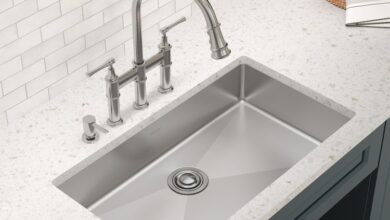Improving Home Accessibility With ADA-Compliant Handrails
Accessibility is a critical concern for both residential and commercial properties. One of the key features that ensure a building is accessible and safe for all individuals is ADA-compliant handrails. ADA-compliant handrails are designed to meet specific criteria outlined by the Americans with Disabilities Act. These handrails are built to be sturdy, accessible and easy to use for people with a wide range of physical abilities.
Some key requirements for ADA-compliant handrails include:
- Height: The handrails must be mounted between 34 and 38 inches above the floor to ensure that they are accessible for individuals who use wheelchairs or other mobility aids.
- Grip: The handrail must have a diameter between 1 ¼ inches and 2 inches, providing an easy grip for individuals with limited hand strength or dexterity.
- Continuous: ADA-compliant handrails must be continuous along the entire length of stairs, ramps, or platforms. This ensures that users can rely on the handrails for steady support from start to finish.
- Clearance: There must be enough clearance between the wall and the handrail, generally at least 1 ½ inches, to allow individuals to comfortably grip and maneuver the handrail.
- Strength: The handrails must be able to support a substantial amount of weight, ensuring that they can provide reliable support in case of a fall or loss of balance.
These specifications are not just guidelines; they are necessary to ensure that people with disabilities can navigate spaces without fear of injury or difficulty.
Why ADA-compliant handrails matter
For homeowners, ADA-compliant handrails are crucial for family members who may have mobility challenges. Older adults, individuals recovering from surgery or injury, and people with disabilities can all benefit from the added support of properly designed handrails. By installing handrails in key areas like stairs, ramps or bathrooms, a home becomes a safer place for residents and visitors, alike.
ADA-compliant handrails are especially important for ramps and stairs, as they provide support for individuals navigating different levels of a building or outdoor space. Installing handrails along ramps helps prevent falls and offers stability to individuals using mobility aids. On stairs, handrails can provide crucial assistance, allowing individuals to hold onto a stable support while ascending or descending.
By ensuring that handrails are properly installed on both ramps and stairs, the risk of accidents is significantly reduced. ADA-compliant handrails are an essential feature in any home that prioritizes accessibility and safety. Properly installed handrails provide individuals with disabilities the support they need to navigate spaces confidently.
In a world where inclusivity and accessibility are becoming increasingly important, installing ADA-compliant handrails is one of the simplest yet most effective ways to create a welcoming and safe environment for all individuals.
Editor’s Note: Article provided by Tony’s Fencing & Iron Works.




